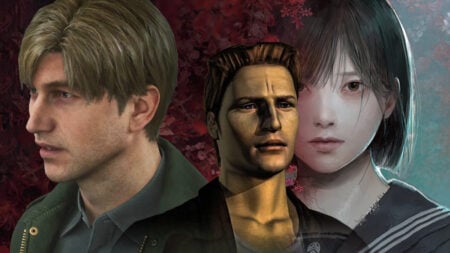Skip To...
Ask yourself a question: When was the last time you truly enjoyed playing through a tutorial? Can you name a single moment in recent memory that the experience was improved by being taught, for the thousandth time, that the left analog stick controls movement while the right controls the camera? These boring, annoying and often unskippable sequences can destroy a fun playthrough before it has even truly begun.

Do we truly need to be taught?
The average age of the modern gamer is now in the 30s, many of these people having seen the birth of the modern industry. Arcades, early consoles and the rise of PC gaming have already taught these gaming veterans what they need to know. Even younger people, who have grown up around controllers and keyboards, have learned common game mechanics and strategies long ago. Why are developers even bothering at all?
We already know how to play, and all tutorials are doing is keeping us from getting into the meat of the content.
The Rebirth of Immersion
Look at the Oculus Rift and other similar devices – a few years ago, the concept of virtual reality was laughable and quickly disappeared from the radar for all but the most die-hard fans. But it seems to be experiencing a second renaissance, and big names like Facebook are taking notice. This rebirth says one single thing: people care about immersion. Games like Elite: Dangerous have based a great deal of their experience around this one factor – and regardless of how you feel about these kinds of games themselves, you can’t deny that a lot of their commercial and critical success has been due to the ease in which players lose themselves in the world.
Tutorials break that immersion, showing the player what they likely already know while slowing down the pace of the game from the very get-go. What’s even worse is that some titles do this more than once, throwing a fresh new feature in half-way through the story, breaking up the action once again as you have to learn what usually ends up being a minor addition anyway. Quite the price to pay just to hold the player’s hand.

The Death of Entertainment
Ask yourself another question: When was the last time you stopped playing a game? Was it a rage quit? Perhaps. Finishing the story? Maybe. But for many, the primary reason for putting a game down to gather digital dust is that it is no longer entertaining. Apart from sucking the title dry of content or gameplay becoming frustrating, the primary drive of that death of entertainment is the death of challenge. Once you’ve figured out how a game works, and how to beat it, it is no longer fun, and the very start of that process comes in the tutorial.
Some games intentionally hide the mechanics to ensure this never happens. Weapon damage, health, and even skills are sometimes hidden from the player, forcing the audience to learn from trial and error or utilizing the oft-forgotten common sense. Introducing a tutorial that spells out these hard numbers means that people will disregard a great deal of the content offered in order to seek out the “best” weapon or the “best” strategy or the “best” method of flying through the game as quickly as possible.
It’s one of the reasons that some people avoid all coverage of major releases – to avoid spoilers, whether that is gameplay, mechanics, story or even graphics. Part of the joy of a fresh game is the very first experience, and knowing that this particular plot point or this particular weapon will appear at some point can ruin a great deal of that initial playthrough. But the tragedy for these people is that tutorials act as spoilers that you can’t avoid.
For example, being told in the tutorial that a fast attack is better against fast enemies is not only obvious but tells the player too much. Now they know the game will be split into fast enemies and not fast enemies, essentially having been let in on the secret of beating these foes before they even encounter them. It’s a subtle spoiler, but it ruins the magic nonetheless. There are some people who do want to know these prime strategies – after all, min-maxing is a thing. But for those of us who want to experience a game rather than just play it, this blatant gamification destroys much of the magic of discovery.

Good Use of a Tutorial
But, like all good rules, there are exceptions. Complex, unusual or innovative games need tutorials so that people can actually play them, and the removal of a tutorial entirely would end up blocking out a lot of new people who might not have the broad knowledge of how games work. While many titles get tutorials wrong, there are many who get them right.
There are those who use the bare minimum of a tutorial to get you started and leave the rest up to you, allowing for discovery but without leaving you completely in the lurch. Roguelikes use this method in particular, as well as those intended to be challenging or replayed. Dark Souls, Kingdom, and Darkest Dungeon all use this method – never spelling out the tactics explicitly, but still giving you enough to work it out on your own.
These are some of the most significant and rewarding tutorial experiences there are. No look left, look right, walk forward, reach this point, etc. It gives the player agency to experience the game and make mistakes while also ensuring they have a fair go at progressing. A good tutorial respects the fact that gamers aren’t morons that need to be told the same conventions again and again, nor do they need their hand held. Mistakes and game overs happen: the key is to make losing fun, or at least not consistently frustrating.
Ultimately, tutorials are likely to soon be a thing of the past. Manuals have gone the way of the dodo for much the same reason – they have become unnecessary. While it’s tempting to say it’s because games have become more simple, that isn’t really the case. In reality, games are becoming more accessible, and part of that is making the mechanics fluid and understandable without relying on the crutch of the tutorial. By removing that crutch, developers open themselves up to a far more impressive product – one that is actively experienced rather than taught. And that, in my opinion, makes the difference between a good game and a great one.







